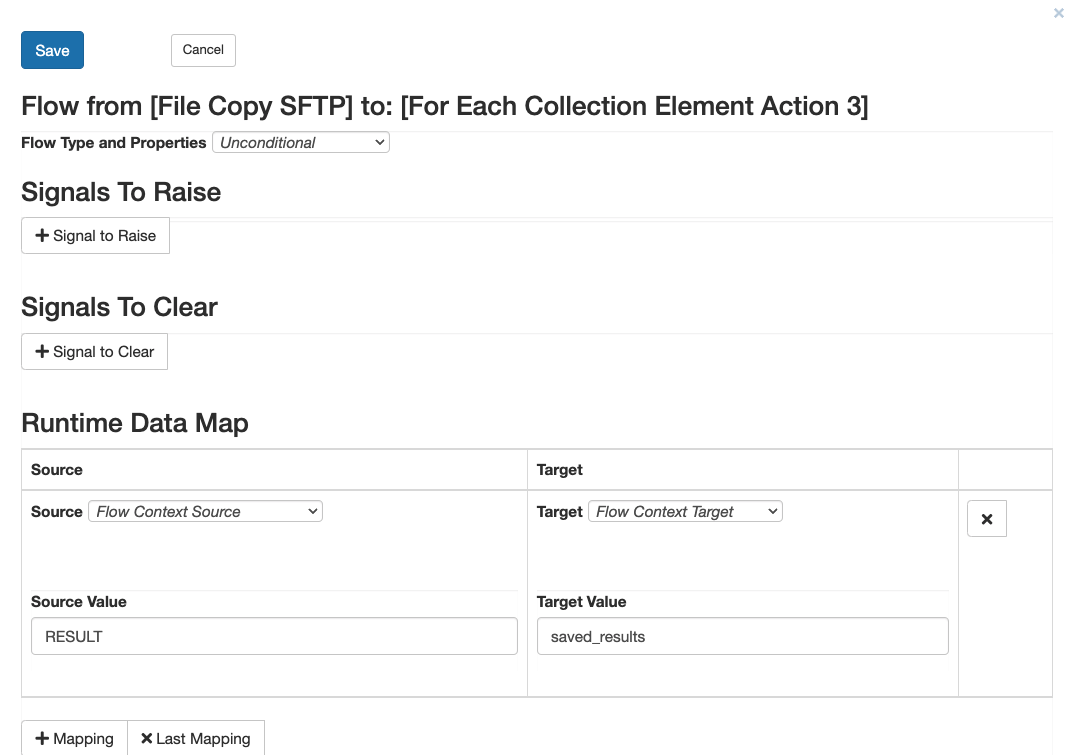Web Service Actions - Web Service Action
Invokes an operation on a Web service. The operation name and input arguments to the Web service are specified using the DynamicMethod interface. This action supports invoking Web services that are secured using usernames and passwords, as defined in the Web Services Security UsernameToken Profile.
Properties
WSDL
Sets the WSDL location that defines how the Web service is accessed and used.
Password Type
Sets the kind of password used to authenticate a secure Web service.
WS-Addressing
Indicates whether the WS-Addressing flag on the Web service request is enabled.
Listener Signature
Sets the method that receives a callback. For example, “doSomething(String s, Integer i)” is a valid signature for a method that might be declared like so.
public void doSomething(String s, Integer i) throws
FileNotFoundException
that the listener signature must be set before any arguments are set.
Result
The Web Service Action returns its result in the flow context variable “result”:
| Flow Context Variable | Field | Description | Prescript / Postscript Example | |
|---|---|---|---|---|
| RESULT | result | Object | The result returned by the Web service, which is not a Flux persistent object and might be a simple object like a string or an integer or a more complex object like an object array whose types are defined by the WSDL. The exact type of result depends entirely on the WSDL. Consult the WSDL for the exact return type. | Object result = flowContext.get("RESULT"); System.out.println("Return Value: " + result); |
Passing Results with a Runtime Data Map
You can use a Runtime Data Map to copy the result into a new variable (for future reference or to reuse the data later in the workflow).
To copy the result, you can use a data map like:
